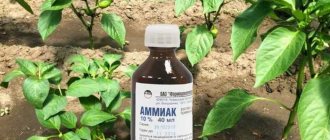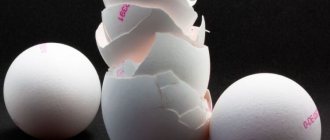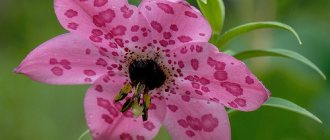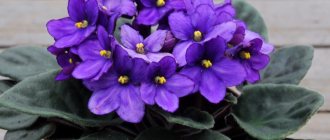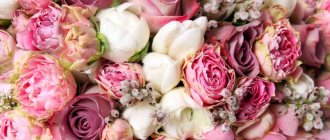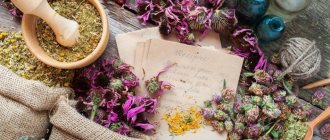The name of this group of plants speaks for itself: they live for one summer. Their development - from sowing in spring to the formation of new seeds in autumn - lasts one growing season. But over their short life, they become a bright decoration of a personal plot and give flower growers a lot of positive emotions. Counters of specialized stores and Internet catalogs offer a huge assortment of different types and varieties of flower and ornamental crops. How to choose annual flowers for a flower bed depending on their height, structure, placement method, when and how to plant - we will tell you in detail in the article.
Bright “suns” in the flowerbed: marigolds and zinnias
Annual plants are divided into true annuals and conditional ones, which by nature are perennial, but are grown in culture as annuals. These are petunia, snapdragon, fragrant tobacco, etc.
Classification of annuals
In order to choose the right annuals for your flowerbed, you should become familiar with their types, biological characteristics and uses. The following groups are distinguished:
- decorative flowering;
- ground cover;
- curly;
- decorative deciduous;
- dried flowers;
- container
Let's look at each group in more detail.
Decorative flowering (beautifully flowering)
Tall species (1-2 m high), for example, caudate amaranth, three-month lavatera, cosmos, summer delphinium, cleome are used to create hedges, they camouflage fences, sheds, and are planted in the center or in the background of flower beds.
Amaranth caudate leaves and seeds are edible. It is an important food crop in India and South America; in temperate climates the seeds do not ripen
Medium (0.5-1 m high): asters, erect marigolds, zinnia, cornflower, snapdragon, lavatera, statice, eustoma. Medium-sized summer gardens occupy the center or next row of the flower garden. Many of them are very good for cutting, for example, eustoma (lisianthus, Irish rose), beloved by florists.
Eustoma is very capricious: it does not grow well, prefers diffused sunlight, needs supports
Low (25-50 cm): eschscholzia, petunia, calendula, asters, rejected marigolds, verbena, salvia. They are planted in the first, often the second row from the edge of the flower garden, in separate groups; many species are suitable for container gardening.
Verbena can decorate a summer cottage both as part of flower beds and in containers
Dwarf (10-20 cm): viola, alyssum, lobularia, ageratum. Dwarfs are planted in the foreground of flower beds, on hills and rockeries, in flowerpots, pots, and balcony boxes.
Viola is considered a biennial, but if you sow seeds for seedlings in January-February, the plant will delight you with flowers in the year of planting
Ground cover (carpet)
Low-growing, unpretentious plants (no more than 30 cm in height, mostly 10-20 cm), capable of growing quickly and filling space. They grow like a carpet over the soil surface.
Representatives: alyssum, lobelia, iberis, limnanthes, annual phlox, dwarf ageratum, ever-flowering begonia.
Purpose: foreground of flower beds, ridges, borders, filling voids between perennials, including conifers, alpine slides, rockeries.
Long-flowering Limnanthes Douglas gives good self-sowing and after a single sowing is able to please every year, ideal for rocky gardens and borders along paths
Curly
Fast-growing plants with long stems from 2 to 6 m. They cling to the support with the help of tendrils.
Representatives: decorative beans, purple morning glory, climbing kobe, large nasturtium, hybrid, Canarian.
Used for vertical gardening: designing hedges, garden gazebos, verandas, arches, camouflaging old buildings, fences.
Nasturtium Canarian (foreign) is amazing for its flowers and five-lobed leaf shape
Decorative foliage
Thanks to the unusual shapes and colors of the leaves, plants of this group have earned well-deserved recognition among landscape designers and amateur gardeners.
Representatives: amaranths, ornamental cabbage, coleus, kochia, cineraria, castor beans.
Use: borders, ridges, flower beds, mixborders, soliter (single) plantings.
Bright coleus, like elements of a colored mosaic, look especially advantageous in border plantings
Dried flowers
This group includes plants that retain their shape and color for a long time after cutting. Many of them have hard petals, a dry, scaly inflorescence wrapper, and a pubescent stem.
Representatives: helipterum, helichrysum, gomphrena, statice, amaranth, celosia, lunaria, xeranthemum.
Purpose: flower beds, mixborders, ridges, alpine slides; drawing up decorative compositions, winter bouquets.
The homeland of statice (kermek) is Central Asia, so the plant loves the sun, is adapted to poor soils, and does not respond well to waterlogging
Container (potted)
They are distinguished by their compactness, decorativeness, and the ability to constantly bloom throughout the season.
Representatives: petunia, calibrachoa, lobelia, bacopa, Drumond's phlox, allisum, nemesia, low-growing marigolds, dwarf snapdragon. They are planted in pots, flowerpots, boxes, hanging baskets.
Calibrachoa is the closest relative of petunia, strewn with many small (up to 3 cm in diameter) flowers with a yellow or brownish center
Container floriculture is popular not only among those with balconies. From several flowerpots you can create a mobile flowerbed and place it at the entrance to the house or gazebo, on the open terrace.
Nemesia is increasingly winning the hearts of flower growers who are fed up with the popular petunias and lobelias
Unfortunately, the size of the publication does not allow us to show all the photos of annual flowers for the flower bed. They can be easily found on the Internet.
Petunia
It is now impossible to imagine a summer landscape without this flower. Petunia looks good in border plantings, and large-flowered and hanging varieties feel great in hanging flowerpots. This plant is most often used for landscaping balconies and terraces.
Petunia. © sarabearchell
Petunia is not afraid of direct sunlight and tolerates drought and short-term drops in temperature. It is not too demanding on the composition of the soil, but on well-fertilized soils it blooms much more abundantly and brightly.
To see petunia bloom earlier, it is recommended to grow it through seedlings. Although it should be noted that varieties with non-double inflorescences also reproduce well by self-sowing. Petunia blooms continuously throughout the summer, until frost. In order for the plants to maintain their decorative properties for a long time, it is recommended to trim the tips of the flower shoots at the end of August, forming them into a beautiful ball.
For more information about varieties and hybrids of petunias, read the article How not to get confused in varieties of petunias and choose the right one.
Advantages of flower beds made from annual plants
Gardeners widely use flowering annuals to decorate their plots, as they:
- They delight with their beauty, brightness, richness of color palette of all possible shades, variety of shapes of single flowers and inflorescences.
- Capable of continuous flowering from June to October.
- They provide the opportunity for annual planning, updating, selection of new varieties and complete replacement of the composition of the flower garden.
- With the help of annuals, you can successfully develop virgin lands - before planting them, every year the soil is dug up, weeds are removed, and enriched. If you immediately plant perennials, such cultivation will be difficult.
- Undemanding in care.
The main difficulties arise, as a rule, during the cultivation of seedlings: some seeds may not hatch at all or may sprout in small quantities; plants sometimes die at home due to unregulated watering, bacterial, fungal infections, do not take root during transplantation, and suffer from street from returning frosts, which, it would seem, have already passed. But this does not stop avid flower growers. You can always sow or make a replacement by purchasing seeds of other varieties with a later sowing time.
Growing by seedlings allows for earlier flowering
For those who do not want to bother with seedlings at home or do not have suitable conditions (lack of wide window sills, lack of light, which, by the way, can be solved with the help of phytolamps (AliExpress offers the widest selection)), it is easy to buy ready-made seedlings, sow the seeds in a greenhouse or greenhouse, or even straight into the ground.
There are annuals that grow well only by sowing seeds into the soil in early spring or autumn. Such plants do not tolerate transplantation well due to the sensitivity of the root system.
Use of annuals in agriculture
The cold climate and permafrost in the subpolar regions of Eurasia and North America limit the range of plants grown. Farming in these areas is possible in greenhouses and heated greenhouses. In cool climates you can grow grain crops, some vegetables and root vegetables. The temperate zone is the vast expanses of Europe, Asia, and the central part of North America. For mass farming in these regions, grains, legumes, industrial and vegetable and melon crops are used.
In the southern part of the temperate zone and in the subtropics, more heat-loving species of agricultural plants are cultivated. These are corn, rice, cotton, sweet peppers, eggplant, watermelon, melon. Oilseeds, essential oils and spicy annual plants, the names of which are familiar to many, are of significant value to industry and the population. These are sunflower, amaranth, mustard, rapeseed, anise, oregano, wormwood, sage.
Landing dates
The optimal timing is calculated depending on the region and method of cultivation. We summarize the recommendations for flower growers in central Russia in the table:
| Growing method | Boarding time | Representatives |
| Seedless | ||
| Early spring sowing | Second half of April | Mattiola, iberis, blue cornflower, eschscholzia, cosmos, calendula, clarkia |
| Late spring | First ten days of May | Marigolds, nasturtium, lavatera, malopa, morning glory, sweet pea, dimorphotheca, acroclinum |
| Podzimny | Late October – early November | Godetia, cornflower, calendula, cosmos, antirrinum (snapdragon), iberis, clarkia |
| Rassadny | ||
| Winter sowing | End of January – February | Evergreen begonia, verbena, lobelia, petunia, Chabot carnation, eustoma, annual delphinium, viola, statice |
| Early spring | March | Ageratum, alyssum, amaranth, asters, verbena, gatsania, Chinese carnation, heliotrope, helichrysum, sweet pea, kochia, gillyflower, lobelia, snapdragon, nemesia, perilla, petunia, salvia, sweet tobacco, Drummond's phlox, cineraria |
| Mid-spring | Mid April | Marigolds, zinnia, amaranth, dahlias, coleus, celosia, chrysanthemums |
In the northern regions, Siberia, and the Urals, sowing seeds for seedlings and, accordingly, planting in open ground are shifted to a later date
Calendula
Calendula officinalis (Calendula officinalis) is one of the most common garden plants, which has long been “registered” in our gardens. Recently, many new varieties of calendula have appeared, which are very different in height, color of petals and shape of inflorescences.
Calendula officinalis (Calendula officinalis). © Plantaholic Sheila
The colors range from pale yellow, greenish and pink to burgundy and brown. There are double and non-double varieties, with chamomile-shaped, tiled and even anemone-shaped inflorescences.
Traditionally, calendula is planted in front gardens and flower beds; it also looks good in mixed borders. Low-growing varieties can be grown in containers and balcony boxes, added to flower borders and flower beds.
For calendula, choose a place well lit by the sun. It is undemanding when it comes to watering and can tolerate any soil, but still prefers light loams. Seeds are sown in open ground in April or before winter - in October-November. Flowering begins in June and continues until late autumn.
Read more about calendula in the article Calendula - cultivation and care.
Rules for placing plants in a flower bed
For joint planting, it is necessary to select crops belonging to a single ecological group with the same requirements for environmental factors. Light-loving - in a sunny place, shade-tolerant - in the shade. Most of the plants listed above are light-loving. Shade-tolerant plants include: begonia, balsam, mimulus, nemophila. Lobelia, petunia, marigolds, and nasturtium tolerate partial shade.
In an attempt to diversify your flower garden, it is not advisable to chase the number of varieties . For a small flowerbed, 2-3 types will be enough.
choice of color combinations plays an important role in creating a beautiful and harmonious composition . When planning, you can rely on the color wheel.
The following triads are commonly used: red-yellow-blue, orange-green-violet. Transitions from one color to another also look good, for example, yellow, light yellow, yellow-green, yellow-orange. It is better when the color intensity increases from the edges to the center of the flowerbed: light pink, pink, light red, red in the center
Flowers in neutral shades of white, gray, black (dark purple, maroon) are widely used in landscaping to soften contrasts.
Lilac petunia, purple verbena with a white eye and snow-white lobelia - simple, elegant, harmonious!
The height of the plants should decrease evenly towards the edges of the flower bed. Tall ones are placed in the center or in the background. Strong differences in levels should not be allowed. So, in discount gardens, the height of the tallest flowers should be from a quarter to half the width of the flower bed itself. In the foreground they create a small border of low-growing plants.
Tall flyers are planted less often than short ones. Low-growing species are better adapted and look more impressive in a dense planting. The manufacturer always indicates recommendations for placing plants and the distance between them on the back of the seed bag.
Herbaceous plants of the family
(photos of various herbs)
People interested in collecting and preparing herbs, as well as traditional herbal treatment, need to know
what
a particular herb looks like in a photo In this article you can see what the most popular medicinal herbs look like in the photo, as well as read brief descriptions of them. WORMWORM - looks like a perennial herb or subshrub with a height of 3 to 150 cm, having a thick root.
Its stems are straight. The plant has dense white-gray drooping. The leaves of wormwood are pinnately or palmately divided, sometimes dissected whole, the lobes are small and thin.
The lower leaves are larger. The scanty yellow (rarely reddish) flowers are collected in small inflorescences. The fruits are small and smooth, the achenes do not have a tuft.
What wormwood grass looks like (photo of wormwood)
ORIGINAL is a perennial herbaceous plant with a height of 30-75 cm with a bare creeping rhizome.
Oregano looks like a subshrub with a 4-sided, erect and bare stem at the top. Oregano leaves are petiolate, oblong-ovate, opposite, pointed at the tip, dark green above, gray-green below, length from 1 to 4 cm.
Small pink or pink-purple flowers are collected in small corymbose-paniculate inflorescences, the bracts are most often dark red in color, and the corollas are purple with a pinkish tint. Oregano grass blooms in July-August.
What the herb oregano looks like (photo of oregano)
SNOW is a herb that belongs to the Umbelliferae family.
It looks like this: the leaves are oblong, ovoid, located on long stalks. Inflorescences in the form of umbrellas without leaves or involucre. The flowers are small, white, sometimes pink. They have 5 stamens. The fruits are flattened laterally and have thin thread-like ribs.
What does the grass look like (photo of the grass)
St. John's wort is a perennial herb, more precisely a subshrub, shrub or even tree.
St. John's wort has a tetrahedral stem. Leaves are opposite. entire, sometimes translucent. The cuttings are short. Flowers solitary or numerous in semi-umbrellas. The flower has 5 sepals. The fruit looks like a leathery capsule, which, when ripe, cracks into three to five multi-seeded nests.
What the herb St. John's wort looks like (photo of St. John's wort)
Datura is a herb, less often a tree-like plant. The height of the grass is from 0.5 to 1 m.
The stem is bare and erect. The leaves are ovate-pointed, alternate, up to 15 cm long, up to 10 cm wide, dark green above, slightly lighter below. The flowers are located in the forks of the stem, solitary and large. The corolla is white. The fruit is large, ovoid, and is basically a four-locular capsule covered with multiple spines.
When ripe, the box dries completely and splits into 4 leaves. The plant is poisonous .
What does Datura grass look like (photo of Datura grass)
What woodlouse grass looks like (photo of woodlouse grass)
Woodlice or chickweed is an annual plant.
It has a branched-creeping cylindrical stem, up to 10 cm high. Woodlice leaves are ovoid in shape with pointed edges. The flowers are small, white, and star-shaped.
The grass blooms in May - August.
Celandine (Warthog) is a herbaceous perennial plant with a straight, branched stem, the height of which reaches from 50 to 100 cm.
At the break, the chesotel secretes a thick, milky juice, which, under the influence of oxygen, gradually acquires an orange-red hue. The leaves are deeply pinnately divided, petiolate, having 3-5 pairs of oval lobes. The flowers are regular in shape, collected in a simple umbrella type, and have a golden yellow color. Each flower has 4 petals, each of which is about 1 cm long.
The grass blooms from May to August. The fruits look like many seed pods.
Beauty and versatility: options for using annuals
In the garden, flower beds are often made consisting of annual plants of the same species, for example, marigolds.
The center of the border is occupied by thin-leaved marigolds, on the sides - low-growing upright
Marigolds (tagetes) in many countries are valued as a seasoning, a medicine, and are used on holidays and during religious ceremonies. Essential oils released by plants repel insect pests and kill pathogenic soil microflora, so they are recommended to be planted among vegetable crops.
It is better to select annual flowering and decorative deciduous flowers for the flowerbed. Their combinations allow you to create spectacular compositions.
A simple square flower garden with marigolds, silver cineraria and lobelia erinus bushes around the perimeter
An interesting option is a polygonal flower bed on the lawn.
White snapdragon in the center, then a row of purple petunias, alternating marigolds and cineraria around the perimeter
To create complex flowerbed compositions, you must first draw a plan on paper, and when planting seedlings in the ground, use markings: it is convenient to “draw” them using thread and pegs.
The background is created by summer dahlias, in - kochia; “petals” of lilac ageratum, white alyssum, marigold, with cineraria around the perimeter
Annuals are a real lifesaver for filling the voids between perennials in regular plantings. They can be used to decorate borders around the perimeter of buildings and along garden paths.
White alyssum copes with two tasks at once: it limits the flowerbed and emphasizes the beauty of the main accent - blue spruce and blooming roses
Designers love to create interesting compositions using stone, wood, household items and other available materials. Why not use their ideas at your dacha?
A blue scattering of lobelia, double petunias, marigolds and gatsanias in pots are combined into an original composition with elements of country house equipment
Caring for annual plants is easy. They require timely watering, weeding, fertilizing with ready-made mineral fertilizers, loosening, and removal of faded flowers and inflorescences. Some species (lobelia, petunia, alyssum) love pruning and respond to it with a new, long wave of flowering. Usually they are pruned in mid-summer, shortening the shoots by a third, or even more.
Decoration of shady places
Many flowers like to grow in bright sun. But not everyone can stand the shadow. We offer names of annual flowers that can tolerate shade.
They feel good in shaded areas:
- Pansies;
- Aquilegia;
- Fuchsia;
- Browallia;
- Cosmea;
- Lobelia;
- Balsam.
There are other plants that will not die without bright sunlight.
By planting these plants as seedlings, you can create various compositions, decorate the shady areas of your garden and create the most interesting color combinations.
Recommendations
- "Definitions of Botanical Terminology". Illinoiswildflowers.info
. Retrieved May 17, 2022. - Collinson, A. S. (1988). Getting to know the world's flora
. London: Unwin Hyman. pp. ISBN 978-0-04-581031-4. - Meltzer, S; Lens, F; Gennen, J; Vannest, S; Rohde, A; Beekman, T. (2008). "Flowering time genes regulate meristem determinacy and growth form in Arabidopsis thaliana." Nature Genetics
.
40
(12): 1489–92. doi:10.1038/ng.253. PMID 18997783. S2CID 13225884.
General tips for sowing annuals for seedlings
Growing annuals from seedlings is quite simple; even a novice gardener can do it. However, there are a number of rules that must be followed if you want to succeed:
- The soil should be light, loose, water- and breathable, and fertile. It must contain loosening elements: river sand, perlite or vermiculite.
- Before the procedure, disinfect the soil. The most effective methods of disinfection: calcination and steaming. To bake in the oven, you need to spread the substrate in a thin layer on a baking sheet, turn on the oven to 90 degrees and place the baking sheet for 30 minutes. To steam the soil, you should put it on a cloth, and then in a colander and keep it over the steam for 1.5 hours, do not forget to stir regularly. After disinfection, it is necessary to restore the beneficial microflora: spill with a solution of Fitosporin, Trichodermin or Alirin.
- To improve germination, you can treat annual seeds with a solution of a growth stimulant (for example, Zircon, Epin, Energen). To do this, prepare a solution and soak them according to the instructions.
- Pay careful attention to the drainage system, which implies the presence of holes and a drainage layer at the bottom of the container (for example, perlite, expanded clay, brick chips, layer thickness about 1.5-2 centimeters).
- After planting, you must create a mini-greenhouse - cover the container with a lid or film. Greenhouse conditions (high humidity and temperature) are necessary for seed germination.
- Do not forget to ventilate the greenhouse daily for 20-30 minutes to avoid the appearance of mold on the seedlings. After the emergence of seedlings, you need to remove the greenhouse gradually.
- Before emergence, the temperature should be maintained at about 22-23 degrees; after, the temperature should be between 20-21.
By the way! Almost all of the listed annuals can be planted in peat tablets. They are washers made of pressed peat. The main advantage is that you do not need to choose a substrate and container; the tablet already implies the function of these items. Before planting, you need to soak the washers in warm water for 0.5 hours.

